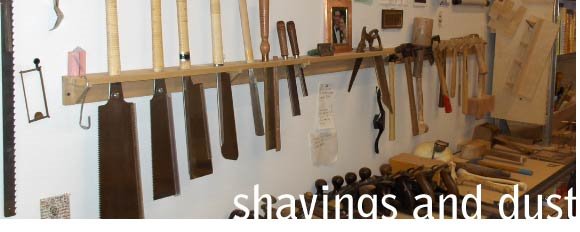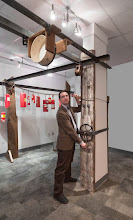The drive out there has started to get familiar in a comforting way. It takes me through the Berkshires, which are beautiful, of course. This past winter there was a huge storm, though, and the highway is lined with trees, some of which are pretty venerable for second- or third-growth trees, that got snapped like matchsticks. They stand broken sentinel along I 90, mute evidence that the forces of nature are as violent as they are benevolent. The beauty of the vistas glimpsed through the trunks contrasts with the melancholy of these broken giants in a way that is profoundly touching.
Coming down out of the mountains, 90 follows the Erie Canal for quite a while. I drive by Lock 14 and then Lock 15, then 16, before the Canal winds away for a while. It eventually meanders back, wide and flat and pregnant with stories and traditions. I have gotten into the habit of listening to Tom Waits as I cruise along the Canal, hurtling along at a rate that was unthinkable when the ditch was cut. Something about the poetry of his lyrics (especially Rain Dogs) and the jangly, chaotic music seems to fit nicely with the ghosts of the bargemen plying the water outside the window.
Just before I get into Syracuse, the drive is through flat land populated by callow young trees, all slim and straight and growing on land that is free for the most part of underbrush so that they make a staccato picture of lines picked out by the sunlight. When there was snow on the ground, these black lines were grounded in a white field, which enhanced the straightness and blackness of the trunks so that they looked more like a stage set than a forest.
Also along this drive here and there are train tracks, many of which are still used, which thrills me. I love trains. In addition to being a more sustainable way to move stuff around (still fossil fuels, of course, but more efficient, at least), they are so romantic and such an icon of American History and such a provider of so many of the songs and stories that I love that my heart beats a little faster whenever I see them rolling ponderously along.
 This last visit, we were driving around Syracuse with a friend who is a brilliant photographer. He was taking photos for a publication that is being put out by the interdisciplinary design center that I am working for, and we came upon some rusted out boxcars sitting on a siding. It is impossible for me to help myself, I got out of the car and went down and started running my hand over the huge couplings and the brake rods and the door locks. Such an eloquent contraption, a box car. Beautiful in its decrepitude, a wholly American version of wabi-sabi, the Japanese idea of beauty in decay.
This last visit, we were driving around Syracuse with a friend who is a brilliant photographer. He was taking photos for a publication that is being put out by the interdisciplinary design center that I am working for, and we came upon some rusted out boxcars sitting on a siding. It is impossible for me to help myself, I got out of the car and went down and started running my hand over the huge couplings and the brake rods and the door locks. Such an eloquent contraption, a box car. Beautiful in its decrepitude, a wholly American version of wabi-sabi, the Japanese idea of beauty in decay.The miles and miles on these old cars, the places that they have been and will go, the hands that built them, the hands that loaded them, the people who have climbed into them and have coupled them together and unloaded them on the other end, who sprayed graffiti on the outside, the power of all of those lives colliding in this one object washed over me. For a minute, it was hard to breathe, even, swept off by the weight of the pictures in my head.
I looked down at the gravel at my feet. I love the road bed of train tracks. It tends to have captivating detritus, bits of iron and rusted steel, massively strong tie rods impossibly twisted into knots, the kind of stuff that makes me swoon. I found some good bits of junk, but there was something more interesting: coal. This particular bed was littered with coal. It must be coal that fell out of hoppers coming from a mine, somewhere, as it is not likely that it is still lying there from the days of the coal-fed steam engines. It put me in mind of the Utah Phillips lyric “When I was just a kid/living by the tracks/us kids would gather up the coal/in a great big gunny sack,” relating in verse a reality that was known everywhere there were train tracks at a certain period, and where money was often scarce. Coal that fell from the tenders would be gathered up to be burned in the coal ovens that wer so ubiquitous then. On the ground around my feet was enough coal to heat a house for a whole winter. I picked up one piece and kept it. I am looking at it now, the deep glimmering black remains of thousands-of-years-dead plant or animal life, that we still depend on for so much of the power the we use to do things like run this computer. Seems so old fashioned, that we should be so dependant on coal still, after all of these years, and after all that we have learned.
And here I am, back around to the water wheel.


No comments:
Post a Comment